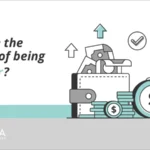Bullying is a pervasive problem that affects people of all ages, genders, and backgrounds. It can take many forms, from physical violence to verbal abuse, and can have serious and long-lasting effects on both the victim and the perpetrator. In this article, we will explore the different types of bullying, including verbal, physical, social, cyber, and sexual, and examine the effects that each can have. We will also look at how to identify bullying and what to do if you or someone you know is being bullied, as well as discuss strategies for preventing bullying from happening in the first place. Join us on this important journey as we work to create a safer and more compassionate world for everyone.
Contents
Verbal Bullying
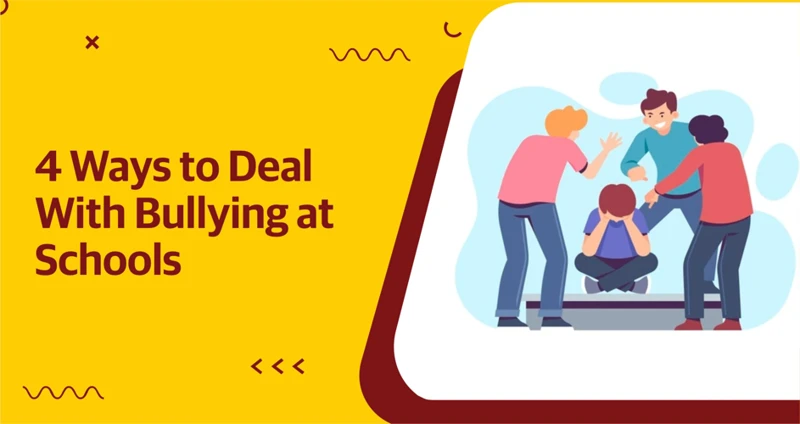
Verbal bullying is a form of bullying that involves the use of words to harm someone. It includes name-calling, teasing, insulting, and making fun of someone’s appearance, religion, race, or sexuality. Verbal bullying can have long-lasting effects on a person’s mental health and self-esteem. Victims of verbal bullying may experience anxiety, depression, and fear. It is important to identify and address verbal bullying in schools and workplaces to create a safe environment for everyone. If you want to learn more about different types of bullying, read this article.
Definition
Bullying is an act of aggression, intentional harm, or harassment that is repeated over time and involves an imbalance of power. It can take many forms, including verbal, physical, social, cyber, and sexual. Verbal bullying involves the use of words, such as insults, name-calling, teasing, and threats, to hurt, intimidate, or demean others. Physical bullying involves the use of force or violence to harm others, including hitting, kicking, pushing, and damaging property. Social bullying involves the use of social exclusion, spreading rumors, and manipulating relationships to harm others. Cyberbullying involves the use of technology, such as social media, texting, and email, to harass, intimidate, or embarrass others. Sexual bullying involves the use of sexual comments, gestures, or behaviors to harass, intimidate, or humiliate others.
Examples
Insults: Calling someone names or using derogatory language to belittle them is verbal bullying. Examples include calling someone fat or stupid.
Teasing: Teasing is a common form of verbal bullying. It can range from harmless jokes to more hurtful comments. Examples include making fun of someone’s appearance or the way they talk.
Threats: Threatening someone with harm, whether physical or emotional, is a form of verbal bullying. Examples include saying “I’m going to beat you up” or “I’m going to tell everyone your secret.”
Cyberbullying: Verbal bullying can also occur online or through social media. Examples include sending hurtful messages or comments, spreading rumors, or posting embarrassing photos or videos.
These are just a few examples of the many forms that verbal bullying can take. It’s important to recognize that verbal bullying can be just as harmful as physical bullying and can have long-lasting effects on the victim.
Effects
Bullying can have serious and long-lasting effects on both the victim and the bully. Victims of bullying often experience a range of negative emotional, physical, and psychological effects, including anxiety, depression, low self-esteem, and even suicidal thoughts and behaviors. They may also experience physical symptoms such as headaches, stomachaches, and sleep disturbances. Bullying can also lead to academic problems, social isolation, and a decreased quality of life.
Bullies themselves may also experience negative effects from their behavior. They may become aggressive and violent in other areas of their lives, and may have difficulty forming healthy relationships with others. They may also experience academic problems and may even face legal consequences for their actions.
Even bystanders can be affected by bullying, experiencing feelings of fear, guilt, and helplessness. Witnessing bullying can also contribute to a hostile school environment, where students feel unsafe and may be less likely to learn and succeed.
It is important to recognize the serious and far-reaching effects of bullying, and to take steps to prevent and address it when it occurs. For more information about how to deal with bullying, check out our article on can a teacher take your phone.
Physical Bullying
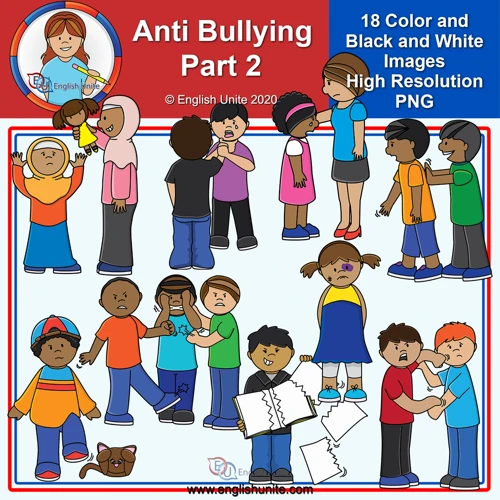
Physical bullying is one of the most visible and obvious forms of bullying. It involves the use of force or coercion to harm or intimidate the victim. Examples of physical bullying include kicking, punching, hitting, spitting, and pushing. The effects of physical bullying can be severe, both physically and emotionally. Victims of physical bullying may suffer from bruises, cuts, broken bones, and other injuries. They may also experience emotional trauma, such as fear, anxiety, and depression. Physical bullying can have long-lasting effects on the victim, impacting their self-esteem, relationships, and overall quality of life. It is important to identify and address physical bullying as soon as possible to prevent further harm to the victim and to promote a safe and healthy environment for all.
Definition
Verbal bullying is a type of bullying that involves the use of spoken or written language to harm, intimidate, or humiliate a person. It can take many forms, including name-calling, teasing, insulting, taunting, and making threats. Verbal bullying can be direct, such as when a bully confronts the victim face-to-face, or it can be indirect, such as when a bully spreads rumors or gossip about the victim.
Verbal bullying can have a significant impact on the victim’s mental health and self-esteem. It can cause anxiety, depression, and stress, and may lead to feelings of worthlessness and hopelessness. Victims of verbal bullying may become withdrawn, avoid social situations, and have trouble forming relationships. Verbal bullying can also have long-term effects, such as difficulty trusting others and a higher risk of developing mental health problems.
Physical bullying is a type of bullying that involves the use of physical force to harm or intimidate a person. It can take many forms, including hitting, kicking, pushing, tripping, and spitting. Physical bullying can be direct, such as when a bully physically attacks the victim, or it can be indirect, such as when a bully damages the victim’s property.
Physical bullying can have serious physical and emotional consequences for the victim. It can cause injuries, such as bruises, cuts, and broken bones, and can lead to long-term health problems. Victims of physical bullying may also suffer from anxiety, depression, and post-traumatic stress disorder (PTSD). They may become fearful and avoid social situations, and may have difficulty trusting others.
Social bullying is a type of bullying that involves the use of social exclusion, manipulation, or embarrassment to harm or intimidate a person. It can take many forms, including spreading rumors, ignoring or excluding a person, and embarrassing or humiliating a person in public.
Social bullying can have a significant impact on the victim’s mental health and social well-being. It can cause feelings of isolation, loneliness, and rejection, and may lead to depression and anxiety. Victims of social bullying may become withdrawn, avoid social situations, and have trouble forming relationships. Social bullying can also have long-term effects, such as difficulty trusting others and a higher risk of developing mental health problems.
Cyberbullying is a type of bullying that involves the use of electronic communication, such as social media, text messages, or emails, to harm, intimidate, or humiliate a person. It can take many forms, including spreading rumors or gossip online, posting embarrassing photos or videos, and sending threatening messages.
Cyberbullying can have a significant impact on the victim’s mental health and well-being. It can cause anxiety, depression, and stress, and may lead to feelings of isolation and loneliness. Victims of cyberbullying may become withdrawn, avoid social situations, and have trouble forming relationships. Cyberbullying can also have long-term effects, such as difficulty trusting others and a higher risk of developing mental health problems.
Sexual bullying is a type of bullying that involves unwanted sexual comments, gestures, or physical contact. It can take many forms, including sexual harassment, sexual assault, and the spreading of sexual rumors.
Sexual bullying can have serious physical and emotional consequences for the victim. It can cause anxiety, depression, and post-traumatic stress disorder (PTSD), and may lead to long-term health problems. Victims of sexual bullying may also suffer from feelings of shame, guilt, and worthlessness. They may become fearful and avoid social situations, and may have difficulty trusting others.
Examples
Verbal bullying can take many forms. It might include name-calling, teasing, or making fun of someone’s appearance, abilities, or personality. It can also involve spreading rumors or gossiping about someone behind their back. For instance, a bully might call someone “stupid” or “ugly,” or tell lies about them to other people. In some cases, verbal bullying can escalate to threats or physical violence.
Physical bullying can be just as damaging as verbal bullying. Some examples of physical bullying include hitting, punching, kicking, or tripping someone on purpose. A bully might also steal or damage someone’s personal belongings, or force them to do things they don’t want to do. Physical bullying can cause serious injuries, ranging from bruises and cuts to broken bones, and can have long-lasting effects on a victim’s physical and emotional well-being.
Social bullying is a type of bullying that involves intentionally excluding someone from a group or community. This might include spreading rumors or gossip about them, or turning other people against them. Social bullying can also involve public humiliation, such as mocking someone in front of others or posting embarrassing photos or videos of them online.
Cyberbullying is a relatively new form of bullying that takes place online. It can include sending hurtful messages or comments through social media or email, spreading rumors or gossip online, or posting embarrassing photos or videos without someone’s consent. Cyberbullying can be particularly damaging because it can be difficult to escape and can spread rapidly to a wide audience.
Sexual bullying is a type of bullying that involves unwanted sexual advances or comments. It might include making inappropriate comments or gestures, touching someone inappropriately, or making someone feel uncomfortable or vulnerable. Sexual bullying can be extremely traumatic for victims and can have long-lasting effects on their self-esteem and mental health.
Effects
On the Victim: The effects of bullying on the victim can be long-lasting and severe. Victims of bullying often experience anxiety, depression, low self-esteem, and feelings of isolation. They may also have trouble sleeping, eating, and concentrating on schoolwork. These negative effects can persist into adulthood, affecting the victim’s ability to form healthy relationships and succeed in their personal and professional lives.
On the Bully: Bullying can have negative effects on the bully as well. They may develop a pattern of aggressive behavior that persists into adulthood, leading to legal problems and difficulty forming healthy relationships. They may also struggle with feelings of guilt and shame, particularly if they are aware of the harm they have caused to others.
On Bystanders: Bystanders who witness bullying can also be affected. They may feel guilty for not intervening, or they may fear becoming the next target of the bully. They may also develop negative attitudes towards school or authority figures, leading to academic and behavioral problems.
The effects of bullying can be devastating for everyone involved. It is important to take steps to prevent and address bullying in order to create a safe and healthy environment for all.

Social bullying is a type of bullying that involves excluding someone from a group or spreading rumors or lies about them. It can be more difficult to spot than other forms of bullying because it often happens behind the victim’s back. Examples of social bullying include intentionally leaving someone out of activities, whispering or laughing behind someone’s back, and spreading false rumors or gossip. The effects of social bullying can be just as harmful as other forms of bullying, leading to feelings of loneliness, low self-esteem, and depression.
Definition
Verbal bullying is a type of bullying that involves the use of words to harm, intimidate, or humiliate the victim. It can take many forms, from teasing and name-calling to spreading rumors or making threats. Verbal bullying can be direct or indirect, and it can occur in person or online.
Examples of verbal bullying include mocking, taunting, belittling, insulting, and using derogatory language. Verbal bullies might make fun of someone’s appearance, intelligence, or background, or they may use slurs or offensive language to demean the victim. They might also spread rumors or lies about the victim to damage their reputation.
The effects of verbal bullying can be just as damaging as physical bullying. Victims of verbal bullying may experience low self-esteem, anxiety, depression, and other mental health issues. They may also struggle academically or socially, and their relationships with family and friends may suffer. In some cases, verbal bullying can escalate into physical bullying or even violence. It is important to address verbal bullying early on to prevent these negative effects from taking hold.
Examples
- Name-calling: Calling someone names based on their physical characteristics, race, religion, or sexual orientation, such as “fat,” “nerd,” “freak,” or “gay.”
- Teasing: Making fun of someone in a way that is hurtful and humiliating, such as mocking their clothing, accent, or hobbies.
- Threatening: Intimidating someone with words, such as “I’ll beat you up” or “I’ll tell everyone your secret.”
- Insulting: Using words that are hurtful and offensive to attack someone’s self-esteem, such as “you’re stupid,” “you’ll never amount to anything,” or “nobody likes you.”
- Hitting: Striking someone with a hand, foot, or object that causes pain or injury.
- Kicking: Using one’s foot to hurt or injure someone else.
- Pushing: Using physical force to move someone forcefully, often causing them to fall or stumble.
- Tripping: Intentionally causing someone to fall by sticking out a foot or leg.
- Excluding: Leaving someone out of a group or activity on purpose, or spreading rumors to make others avoid them.
- Ignoring: Pretending not to see or hear someone, or refusing to acknowledge their presence or contributions.
- Public humiliation: Embarrassing someone in front of others, often by making fun of their appearance, behavior, or mistakes.
- Gossiping: Spreading rumors or lies about someone behind their back, often with the intention of damaging their reputation or relationships.
- Harassment: Repeatedly sending threatening or hurtful messages, images, or videos through social media, email, or text.
- Impersonation: Creating fake accounts or using someone else’s identity to spread false information or hurtful messages.
- Outing: Publicly sharing someone’s private information or secrets without their consent, often to embarrass or humiliate them.
- Trolling: Posting inflammatory or offensive comments or messages online with the intention of provoking others or causing conflict.
- Sexual harassment: Making unwanted sexual advances or comments, touching someone inappropriately, or using sexually explicit language or gestures.
- Sexual coercion: Forcing someone to engage in sexual activity against their will, often through threats or manipulation.
- Sexual assault: Physically forcing someone to engage in sexual activity without their consent.
- Sexual shaming: Making someone feel ashamed or embarrassed about their sexual orientation, identity, or behavior.
Effects
Bullying can have a severe impact on the victim’s mental and physical health. Victims of bullying may experience anxiety, depression, and low self-esteem. They may also have trouble sleeping, eating, and concentrating on school or work. In some cases, victims of bullying may turn to self-harm or suicide as a way to cope with their pain.
Additionally, victims of bullying may feel isolated and alone, as they may be afraid to tell others about their experiences for fear of retribution or further bullying. This can lead to a sense of hopelessness and helplessness.
Bullying can also have negative effects on the bully. Those who engage in bullying behavior may have trouble forming healthy relationships and may struggle with empathy and understanding the feelings of others. They may also have difficulty regulating their emotions and may be more likely to engage in criminal behavior later in life.
Witnessing bullying can also have negative effects on bystanders. Those who witness bullying may feel guilty for not intervening or may feel fear and anxiety about becoming targets themselves. Additionally, bystanders may begin to believe that bullying is acceptable behavior, which can lead to a culture of bullying in schools and other settings.
Cyberbullying
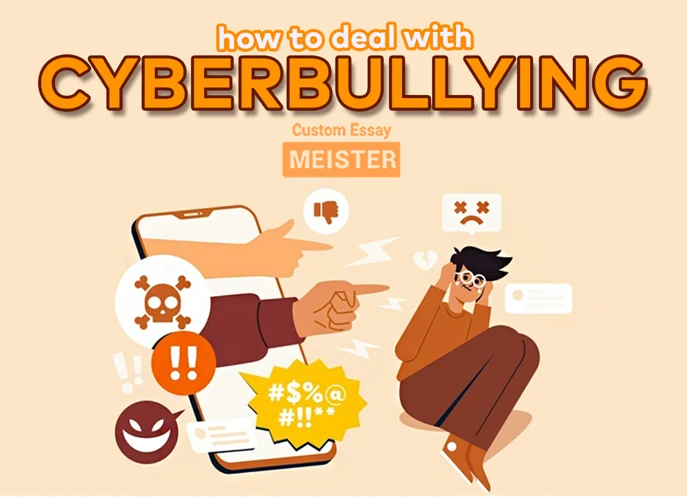
Cyberbullying is a type of bullying that uses electronic technology, such as social media, texting, or emails, to harass, embarrass, or humiliate a person. It can happen to anyone, anywhere, at any time. Cyberbullying is especially dangerous because the bully can hide behind the anonymity of the internet and can reach a vast audience with their hurtful messages. Examples of cyberbullying include spreading rumors online, sending threatening messages, and sharing embarrassing photos or videos. The effects of cyberbullying can be severe and long-lasting, including depression, anxiety, and even suicide. It is essential to be aware of the signs of cyberbullying and take steps to prevent it.
Definition
Verbal bullying is any type of bullying that involves the use of words, rather than physical violence. This type of bullying can take many forms, including teasing, name-calling, taunting, and threatening language. Verbal bullies often use their words to control or manipulate their victims, and they may use insults or put-downs to make their victims feel inferior or powerless. While verbal bullying is often less visible than physical bullying, it can be just as damaging to the victim’s self-esteem and mental health. It can occur in person or via electronic communication, such as social media or text messaging.
Examples
- Name-calling: Using derogatory names to insult, demean or belittle someone. For example, calling someone “stupid,” “ugly,” or “fat.”
- Teasing: Making fun of someone in a way that is hurtful and offensive. For example, making fun of someone’s appearance, clothing, or interests.
- Threatening: Using intimidation or fear to control someone. For example, threatening to harm someone physically or emotionally if they don’t do what the bully wants.
- Mocking: Mimicking someone’s voice or actions in a way that is meant to be insulting or embarrassing. For example, imitating someone’s stutter or limp.
- Verbal abuse: Using language to cause emotional pain or distress. For example, telling someone they are worthless, that nobody likes them, or that they should kill themselves.
- Hitting: Using physical force to hurt someone. For example, punching, slapping, or kicking.
- Pushing: Shoving or pushing someone in a way that is meant to be harmful or intimidating.
- Tripping: Causing someone to fall down by sticking out a foot or leg, or by pushing them.
- Spitting: Deliberately spitting on someone, either as an insult or to spread germs.
- Stealing: Taking someone’s possessions without permission, or damaging them intentionally.
- Exclusion: Deliberately leaving someone out of social activities or events, or refusing to talk to them or be their friend.
- Spreading rumors: Telling lies or spreading false information about someone in order to damage their reputation or social standing.
- Embarrassing: Doing something to make someone feel embarrassed or humiliated in front of others. For example, revealing a personal secret or making fun of someone’s appearance.
- Intimidation: Using looks, gestures, or body language to make someone feel afraid or uncomfortable. For example, staring someone down or standing too close to them.
- Cyberbullying: Using social media, text messages, or other digital means to harass, embarrass, or intimidate someone.
- Harassment: Sending repeated messages or threats via email, social media, or other digital platforms.
- Impersonation: Creating fake profiles or pretending to be someone else online in order to harass or embarrass someone.
- Posting embarrassing photos or videos: Sharing pictures or videos of someone without their permission, or altering them in a way that is meant to be insulting or humiliating.
- Spreading rumors: Telling lies or spreading false information about someone online in order to damage their reputation or social standing.
- Cyberstalking: Using the internet to follow someone’s movements or monitor their activities in a way that is meant to be threatening or intimidating.
- Sexual harassment: Making unwelcome sexual advances or comments, either in person or online.
- Sexual assault: Forcing someone to engage in sexual activity against their will.
- Sexual shaming: Making someone feel ashamed or embarrassed about their sexuality or sexual experiences.
- Using sexual language: Making sexual comments or jokes in a way that is meant to be hurtful or offensive.
- Exposing: Exposing someone’s private body parts without their consent, either in person or online.
Effects
Bullying has a range of negative effects on victims, both short-term and long-term. In the short term, victims may experience physical injuries, emotional distress, and social isolation. Some victims may also suffer from anxiety, depression, and low self-esteem. Studies have shown that victims of bullying are at a higher risk of developing mental health issues later in life, such as post-traumatic stress disorder (PTSD) and suicidal ideation.
Long-term effects of bullying on victims can be severe and long-lasting. Victims may experience difficulty forming and maintaining relationships, struggle with trust issues, and suffer from poor academic and career outcomes. They may also be at a higher risk of substance abuse and addiction.
Bullies also suffer from negative effects as a result of their behavior. In the short term, bullies may experience feelings of guilt, shame, and anxiety. They may also face disciplinary action and social isolation from peers and authority figures. In the long term, bullies are at a higher risk of developing antisocial behavior, substance abuse, and criminal behavior. They may also struggle with forming and maintaining healthy relationships and may experience poor academic and career outcomes.
Witnessing bullying can also have negative effects on bystanders, even if they are not directly involved. Bystanders may experience feelings of guilt, shame, and helplessness for not intervening. They may also suffer from anxiety, depression, and fear of becoming a victim themselves. Studies have shown that bystanders who witness bullying may be more likely to engage in bullying behavior themselves in the future.
Sexual Bullying
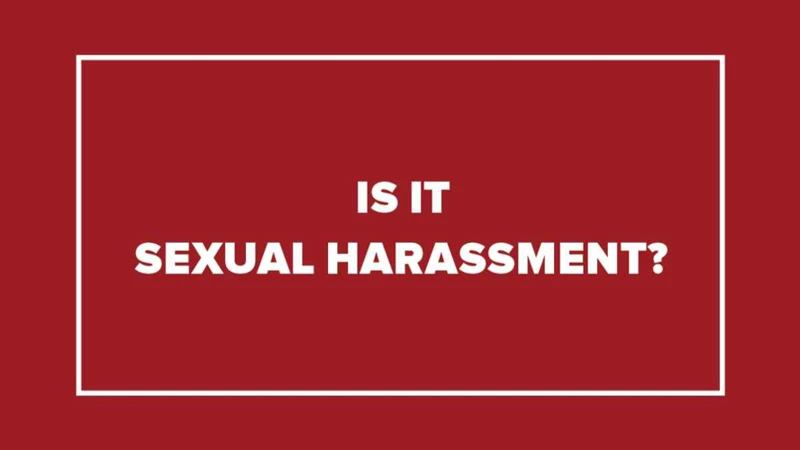
Sexual bullying is a type of bullying that involves unwanted sexual comments, gestures, or physical contact. It can take many forms, including spreading rumors or making inappropriate jokes about someone’s sexuality, body, or sexual activity. Sexual bullying can have serious and long-lasting effects on the victim’s mental and physical health. It can cause feelings of shame, humiliation, and anxiety, and lead to depression, eating disorders, and self-harm. It is important to recognize and address sexual bullying to create a safe and respectful environment for everyone.
Definition
Verbal bullying is when someone uses words to hurt or humiliate another person, such as name-calling, teasing, insulting, or threatening. It can happen in person, online, or through other forms of communication. Verbal bullying can be direct, where the bully says hurtful things to the victim’s face, or indirect, where the bully spreads rumors or gossip about the victim. It can also be subtle, where the bully uses sarcasm or jokes to put the victim down. Verbal bullying is a form of emotional abuse that can have serious and long-lasting effects on the victim’s self-esteem, mental health, and overall well-being.
Examples
Verbal Bullying: Name-calling, teasing, mocking, taunting, making fun of someone’s appearance, spreading rumors or lies about someone, threatening someone, using inappropriate language or tone of voice.
Physical Bullying: Hitting, punching, kicking, pushing, tripping, spitting, stealing or damaging someone’s property, making rude or obscene gestures, making someone do something they don’t want to do.
Social Bullying: Excluding someone from a group, spreading rumors or lies about someone, manipulating others to turn against someone, ignoring or rejecting someone, embarrassing someone in public, making someone feel unwanted or unimportant.
Cyberbullying: Posting mean or hurtful messages, photos, or videos online, creating fake profiles to bully someone, spreading rumors or lies about someone online, sending threatening messages or emails, excluding someone from online groups or activities.
Sexual Bullying: Making unwanted sexual comments or gestures, touching someone inappropriately, making sexual jokes or gestures about someone, spreading rumors or lies about someone’s sexual activity or orientation, pressuring someone to engage in sexual activity.
Effects
Effects
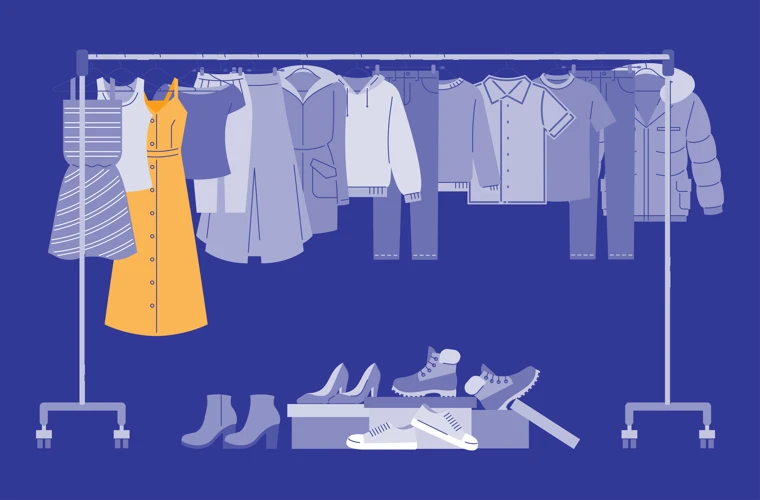
Being a victim of bullying can have long-lasting effects on a person’s mental and physical health. The victim may experience anxiety, depression, and low self-esteem, which could impact their academic and social performance. In some cases, the victim may even develop post-traumatic stress disorder (PTSD) as a result of the bullying.
Bullying can also lead to physical health problems such as headaches, stomachaches, and sleep disturbances. Victims may also develop psychosomatic symptoms, such as feigning illness to avoid attending school where they are being bullied.
Bullying is not only harmful to the victim, but it can also have negative effects on the bully’s life. Engaging in bullying behavior can lead to a lack of empathy and antisocial behavior, which can have lasting effects on their social relationships and future job prospects.
Bullies may also experience mental health issues such as anxiety and depression, as well as substance abuse problems as a result of their behavior.
Witnessing bullying can also have negative effects on bystanders. They may feel guilt for not intervening, or fear that they may become the next victim of the bully. Bystanders may also experience anxiety and stress, and may even develop symptoms of depression.
Effects of Bullying
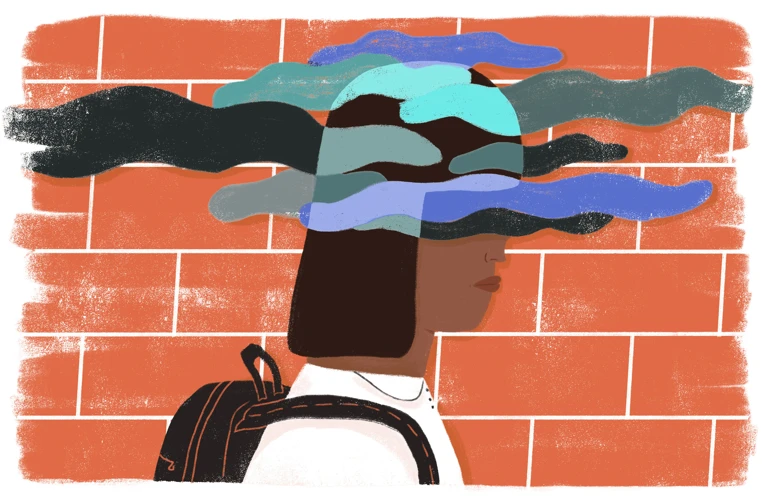
Bullying can have a lasting impact on everyone involved, including the victim, the bully, and bystanders. Victims of bullying often experience anxiety, depression, and low self-esteem. They may also struggle with academic performance and social relationships. Bullies may face legal consequences for their actions and may also struggle with mental health issues in the future. Bystanders who witness bullying can also be affected, leading to feelings of guilt or helplessness. It’s important to recognize the harmful effects of bullying and work towards prevention and intervention strategies.
On the Victim
Effects of bullying on the victim can be severe and long-lasting. Victims of bullying often experience physical, emotional, and psychological harm. Physical effects can include bruises, broken bones, and other injuries. Emotional and psychological effects can include anxiety, depression, and low self-esteem. Victims of bullying may also experience difficulty sleeping, eating disorders, and other health problems.
Bullying can also have a negative impact on the victim’s academic performance and social life. Victims may struggle to concentrate in school and may experience a decline in grades. They may also have difficulty making friends and participating in social activities.
Bullying can leave victims feeling isolated, ashamed, and powerless. They may feel like they have no one to turn to for help or support. Victims of bullying may also experience feelings of anger, sadness, and hopelessness.
It is important for victims of bullying to receive support and intervention as soon as possible. This can help to minimize the long-term effects of bullying and help victims to regain a sense of control over their lives. Victims of bullying should be encouraged to talk to a trusted adult or seek professional help if necessary. It is also important for schools and communities to take steps to prevent bullying and create a safe and supportive environment for all students.
On the Bully
Bullying doesn’t just affect the victim, but it also has an impact on the bully. The bully may feel a sense of power or control when they bully others, but this feeling is often short-lived and replaced by guilt, shame, and anxiety. Bullying behavior can become a habit, making it difficult for the bully to change their behavior. The bully may also struggle with interpersonal relationships, finding it difficult to make friends or maintain healthy relationships with others. Over time, bullying can lead to a host of negative outcomes for the bully, including increased aggression, lower academic achievement, and a higher likelihood of engaging in criminal behavior later in life. It’s important to address bullying behavior not only to protect the victim but also to help the bully overcome their negative behavior patterns and develop healthier ways of interacting with others.
On Bystanders
Bystanders can play a significant role in bullying situations. A bystander is someone who observes the bullying but does not directly participate, either as the bully or the victim. It is estimated that in 85% of bullying situations, there are bystanders present.
Bystanders may feel powerless or afraid to intervene, but they can take action to help prevent or stop bullying. Research has shown that bystander intervention can be an effective way to reduce bullying.
There are several ways that bystanders can help. They can speak up and tell the bully to stop, offer support to the victim, or get help from a teacher or other authority figure. Bystanders can also distract the bully or remove the victim from the situation.
However, bystanders may also contribute to the problem of bullying. They may laugh or encourage the bully, or they may ignore the situation altogether. This can make the victim feel even more isolated and helpless.
It is important for bystanders to understand the impact of their actions or inaction. By standing up to bullying, they can help create a safer and more supportive environment for everyone.
How to Identify Bullying
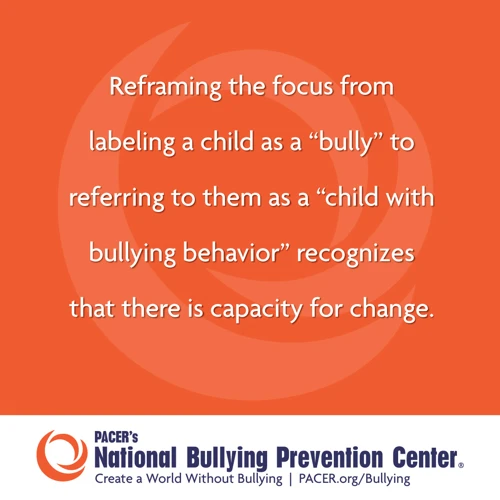
Identifying bullying can be difficult, as it may happen when adults are not around. However, there are signs to look for. Victims of bullying may show a change in behavior, such as becoming withdrawn or anxious, and may have unexplained injuries. They may also have trouble sleeping or eating. Bullies may be aggressive and impulsive, have trouble following rules, and may have a history of disciplinary problems. Bystanders may seem uncomfortable or may avoid the bully or victim. If you suspect bullying, it is important to take action. Talk to the victim to offer support, and report the bullying to a teacher or other authority figure. It is important to create a safe environment and teach empathy and respect to prevent bullying from happening in the first place. Encouraging upstanders, who speak up and intervene when they see bullying, can also help to prevent it.
Signs to Look For
It is important to be aware of the signs that someone may be a victim of bullying. Some common signs to look for include:
- Unexplained injuries: If a child has unexplained bruises, cuts, or scratches, it could be a sign that they are being physically bullied.
- Changes in behavior: If a child suddenly becomes withdrawn or anxious, it could be a sign that they are being bullied.
- Lost or destroyed belongings: If a child’s belongings are frequently lost or destroyed, it could be a sign of bullying.
- Changes in eating habits: If a child suddenly loses their appetite or starts binge eating, it could be a sign that they are being bullied.
- Sleep disturbances: If a child has trouble falling asleep or wakes up frequently during the night, it could be a sign of bullying.
- Declining grades: If a child’s grades suddenly start to drop, it could be a sign that they are being bullied.
- Skipping school: If a child starts skipping school or has frequent absences, it could be a sign that they are being bullied.
- Low self-esteem: If a child suddenly starts to have low self-esteem or negative self-talk, it could be a sign that they are being bullied.
- Anxiety: If a child frequently feels anxious or has panic attacks, it could be a sign that they are being bullied.
If you notice any of these signs in a child, it is important to talk to them and find out what is going on. It is also important to report any suspected bullying to the appropriate authorities.
What to Do
If you suspect that someone is being bullied or if you are a victim of bullying, it is essential to take action. Here are some steps you can take:
| Step 1: | Stay calm and try not to react emotionally. Bullies want to get a reaction out of their victims, so don’t give them the satisfaction. |
| Step 2: | Speak up and tell the bully to stop. Use a firm and confident tone of voice, and make eye contact. Let the bully know that you will not tolerate their behavior. |
| Step 3: | Seek help from a trusted adult. This can be a teacher, counselor, or parent. They can help you come up with a plan to deal with the bully. |
| Step 4: | Document the bullying. Write down the date, time, and location of the incident, as well as any witnesses. This can be useful if you need to report the bullying to school authorities or the police. |
| Step 5: | Take care of yourself. Bullying can be traumatic, so make sure to practice self-care. Surround yourself with supportive friends and family, and engage in activities that make you feel good. |
| Step 6: | Report the bullying. If the bullying continues or becomes violent, report it to school authorities or the police. No one should have to endure bullying, and it is important to take action to stop it. |
Remember, bullying is never okay, and there are people who can help. Don’t suffer in silence, and don’t hesitate to reach out for support.
Preventing Bullying
Creating a safe environment, teaching empathy and respect, and encouraging upstanders are all essential components of preventing bullying. Schools and communities can establish policies and procedures that protect students from all types of bullying. Teachers and parents can model respectful and empathetic behavior, and provide opportunities for children to learn and practice these skills. By promoting a positive school culture and teaching children how to be upstanders, we can help prevent bullying and create a safer, more inclusive environment for all.
Creating a Safe Environment
Creating a safe environment is one of the most important ways to prevent bullying. Schools, households, and communities should all strive to provide a secure and nurturing environment for children and young people. This can be achieved by implementing policies and procedures that promote safety and respect.
One way to create a safe environment is to establish clear rules and expectations. This includes a code of conduct that outlines how students should treat one another and what behaviors are unacceptable. Teachers and parents should work together to ensure that these rules are enforced consistently and fairly.
Another important strategy is to provide adequate supervision. Adults should be present and engaged in all areas where children and young people spend time, including classrooms, playgrounds, and online spaces. This helps to deter bullying behavior and provides a sense of security for those who may be at risk.
Additionally, promoting positive relationships is essential to creating a safe environment. Encouraging students to form healthy friendships and supporting them in resolving conflicts can help prevent bullying behavior from developing. It’s also important to recognize and celebrate diversity, as this can help to reduce prejudice and discrimination.
Creating a safe environment requires a commitment to promoting respect, inclusion, and kindness. By working together and taking proactive steps to prevent bullying, we can help ensure that children and young people have the opportunity to learn and grow in a supportive and nurturing environment.
Teaching Empathy and Respect
Teaching empathy and respect can prevent bullying. Children should be taught to respect each other’s differences from an early age. They should be taught to empathize with each other and put themselves in each other’s shoes. When children learn to empathize, they are less likely to bully others. It is important to teach children that everyone is unique and that differences should be celebrated. It is also important to teach them to be kind to others and to treat others the way they want to be treated. Children should be taught to stand up for each other when they see someone being bullied. It is important to create a safe and inclusive environment where children feel comfortable and respected. Teaching empathy and respect can help children develop positive relationships with each other and prevent bullying from occurring.
Encouraging Upstanders
Encouraging upstanders is an essential strategy for preventing bullying. Upstanders are individuals who witness bullying and take action to stop it. Encouraging upstanders involves creating a culture where it is not only acceptable but encouraged to speak up when someone is being targeted. This can be achieved through education programs that teach students how to be upstanders and by recognizing and rewarding those who take action to stop bullying. By encouraging upstanders, we can create a safer environment for everyone. Upstanders can help to de-escalate situations, provide support to victims, and hold bullies accountable for their actions. They can also help to change the social norms around bullying, making it less acceptable and less likely to occur. By building a community of upstanders, we can work together to prevent bullying and create a more positive and inclusive environment for all.
Conclusion
In conclusion, bullying is a serious issue that can have long-lasting effects on both the victim and the bully. It is important for everyone to take a stand against bullying and work towards creating a safe and respectful environment for all. This can be achieved by identifying the different types of bullying, educating ourselves and others on the effects of bullying, and taking steps to prevent bullying from happening in the first place. Remember that even small actions, like standing up for someone who is being bullied, can make a big difference in someone’s life. Let’s all work together to create a world where bullying is no longer tolerated.
Frequently Asked Questions
FAQs
1. What is verbal bullying?
Verbal bullying is a type of bullying that involves the use of words to harm or humiliate another person.
2. What are some examples of verbal bullying?
Examples of verbal bullying include name-calling, teasing, insults, and spreading rumors.
3. What are the effects of verbal bullying?
The effects of verbal bullying can include low self-esteem, depression, anxiety, and social withdrawal.
4. What is physical bullying?
Physical bullying is a type of bullying that involves the use of physical force to harm or intimidate another person.
5. What are some examples of physical bullying?
Examples of physical bullying include hitting, pushing, kicking, and stealing or destroying someone’s property.
6. What are the effects of physical bullying?
The effects of physical bullying can include physical injuries, emotional trauma, and long-term psychological damage.
7. What is social bullying?
Social bullying is a type of bullying that involves excluding, isolating, or spreading rumors about another person.
8. What are some examples of social bullying?
Examples of social bullying include spreading rumors, excluding someone from a group, and cyberbullying through social media.
9. What are the effects of social bullying?
The effects of social bullying can include feelings of loneliness, social anxiety, and depression.
10. What is cyberbullying?
Cyberbullying is a type of bullying that occurs through the use of technology, such as social media, text messages, or online forums.

